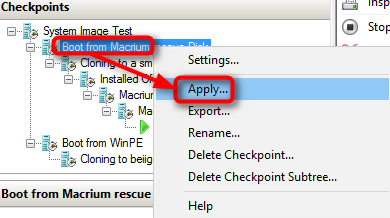New
#21
Let's just make this very clear:
OP's question:
When you want to save the initial state of your vm, the checkpoint is the way to do it. It does exactly what you want to, according to your question: it saves the initial state of your vm.
Please remember that although it has been posted in this thread that you cannot have several branches of checkpoints, that is not true; you can create new checkpoint branches as you wish and restore (apply) any checkpoint from any branch whenever you want to and further create new checkpoints on that branch.
The checkpoints do not only do exactly what you asked for, they allow you to save various states of your virtual machine.
If you want to reuse the same VHD on another vm, then export is the way to do it. Remember that an exported new vm needs it's own product key to activate whereas restoring a checkpoint to state when Windows was activated does not require reactivation.
Kari


 Quote
Quote



